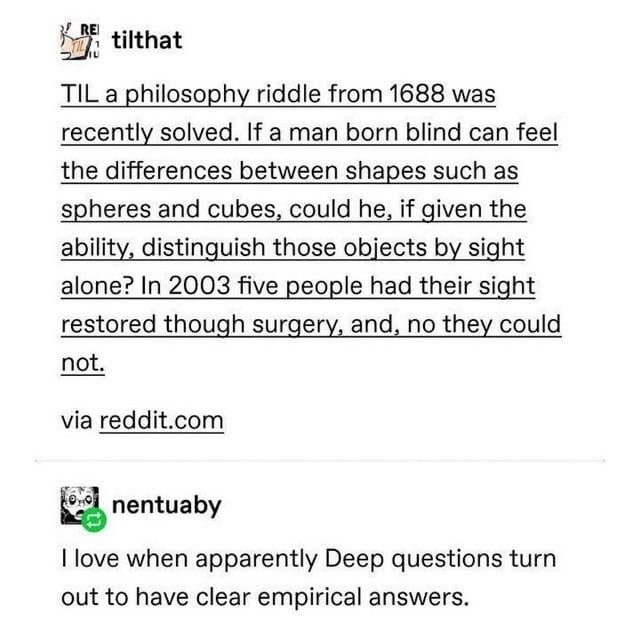this post was submitted on 21 Oct 2023
1046 points (98.5% liked)
Microblog Memes
5885 readers
3919 users here now
A place to share screenshots of Microblog posts, whether from Mastodon, tumblr, ~~Twitter~~ X, KBin, Threads or elsewhere.
Created as an evolution of White People Twitter and other tweet-capture subreddits.
Rules:
- Please put at least one word relevant to the post in the post title.
- Be nice.
- No advertising, brand promotion or guerilla marketing.
- Posters are encouraged to link to the toot or tweet etc in the description of posts.
Related communities:
founded 1 year ago
MODERATORS
you are viewing a single comment's thread
view the rest of the comments
view the rest of the comments

Given our current understanding of the human brain, I would've argued that this answer was rather obvious.
Even though the human brain is excellent at abstracting thoughts and performing logical reasoning, it needs time to adjust to a new sensory input, which it wasn't exposed to before. This is what learning is.
It would be good to know how those people approached those shapes. Did they just look at those to "intuitively" decide or did they also think, i.e., reason, about it?
And yet, I feel like I can perfectly imagine what it would be like to lick anything that I have previously touched with my feet or fingers, despite never having experienced the sensation on my tongue before, and knowing that the nerves on my tongue perceive texture entirely different to my hands.
Edit: just scrolled down and saw that people are discussing this exact phenomenon.
In fairness you spend a lot of your childhood licking everything you come across. I bet your tongue has touched many more of those objects than you can remember.
To add to this, we've eaten a lot of spheres and cubes as adults as well, it would be strange if you couldn't tell a cherry from a watermelon cube by feel alone